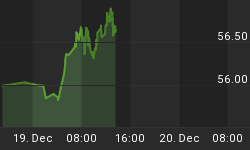The U.S. Dollar closed lower against most major currencies on Wednesday. The bearish tone was set during the overnight trading session following the release of a report from the International Monetary Fund that showed a reduction in the amount of estimated losses from the financial crisis.
The U.S. Dollar finished down as an IMF Report encouraged traders to lighten up their recent long positions. Since late last week the U.S. Dollar has been gaining ground versus most major currencies as investors remained skeptical that the global economy was on track for a recovery. Traders have been questioning whether the recovery would be able to sustain itself without the influence of central bank stimulus.
Tuesday's weaker than expected U.S. consumer confidence report demonstrated that consumers are still the key to a recovery as this poor number ignited a rally in the Dollar and a break in U.S. equities. Overnight, the IMF's Global Stability Report reassured investors that the global economy would grow faster than expected and erased some of the doubt left in the market following yesterday's weak U.S. consumer confidence report.
The IMF report reduced estimated losses from the financial crisis by $600 billion to $3.4 trillion. In reporting this substantial reduction in its estimate, the IMF said, "...systemic risks have been substantially reduced following unprecedented policy actions and nascent signs of improvements in the real economy." The report went on to state that "...there is growing confidence that the global economy has turned the corner, underpinning the improvements in financial markets."
Trading was mixed during the New York session as economic data from the U.S. triggered a two-sided reaction. The choppy trading conditions were created when traders tried to balance the benefits of a better than expected GDP number and a worse than expected Chicago PMI report. In addition to these two reports, investors had to determine what influence, if any, the ADP Employment report had on the economy. The number was better than expected, but none the less reflected further job losses.
Demand for the Dollar was weak throughout the day as traders felt more confident to seek higher yields in more risky assets.
The EUR USD rebounded after sustaining losses earlier in the week. It was reported early this morning that German unemployment dropped to 8% in September from a reported 8.3% in August. This news coupled with the bullish IMF report helped set the tone for today's rally. News that banks cut demand for one-year European Central Bank loans sent a signal that perhaps Euro Zone banks are healthier than previously reported.
The GBP USD closed higher in a continuation of yesterday's rally. Favorable U.K. Retail Sales and second quarter GDP Report provided the support earlier in the week. This morning's bullish IMF report is helped to extend the gains. Based on the chart pattern, the rallies over the past two days are most likely strong short-covering.
The USD JPY finished sharply lower on Wednesday despite a statement on Tuesday from the Japanese Finance Minister saying that Japan would not hesitate to intervene against the Yen if a rapid rise in price was triggered by abnormal trading conditions. This comment clarified last week's statement which indicated that the Bank of Japan would allow the Yen to rally without interference.
Stronger demand for higher risk assets helped put pressure on the USD CAD. The Canadian Dollar opened higher this morning, but it was a better than expected U.S. gasoline inventory report that sent crude oil sharply higher in a move that spilled over to the currency. Greater demand for gasoline could help crude oil improve which would be beneficial to the Canadian economy.
The Swiss Franc bucked the trend of the other currency markets to finish lower for the day versus the Dollar. Reports that the Swiss National Bank intervened to push down the Franc versus the Euro helped the Dollar gain ground. Traders will be watching to see if the Euro responds or if another round of intervention is necessary.
Demand for higher yielding assets because of the bullish IMF report and mixed U.S. financial reports helped boost the prices of the AUD USD and NZD USD. Traders are also supporting the Aussie in anticipation of an interest rate hike before the end of the year. The Aussie and the Kiwi could soar to the upside tomorrow if trader appetite for risk increases demand for higher yields.















